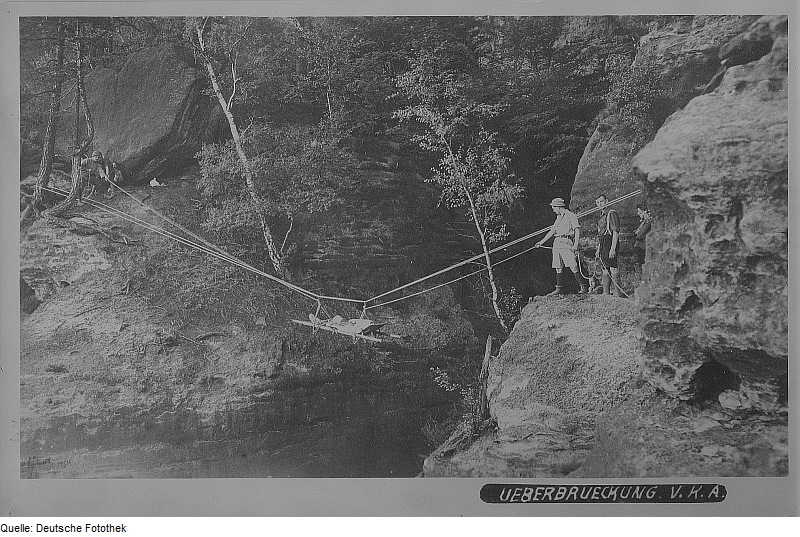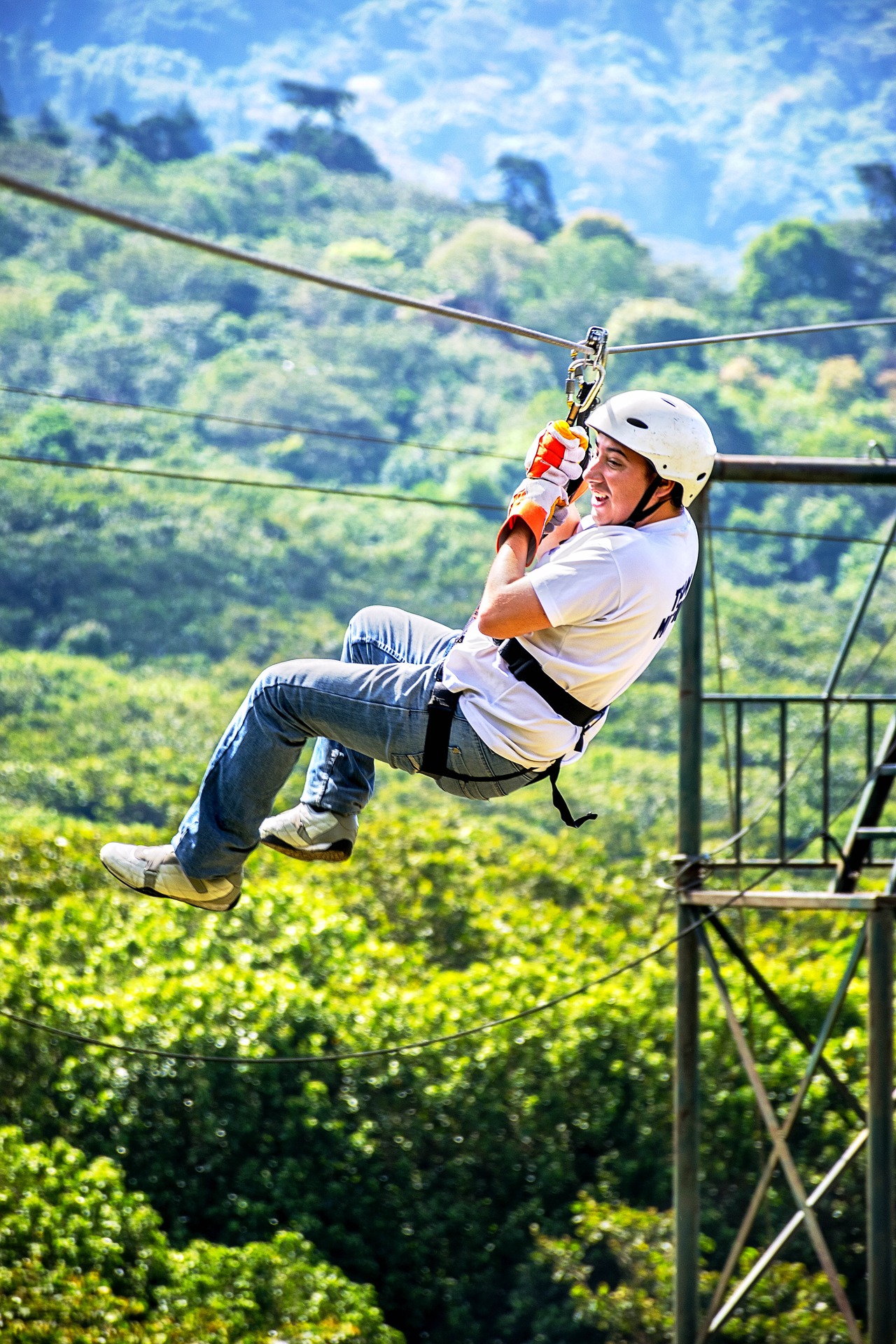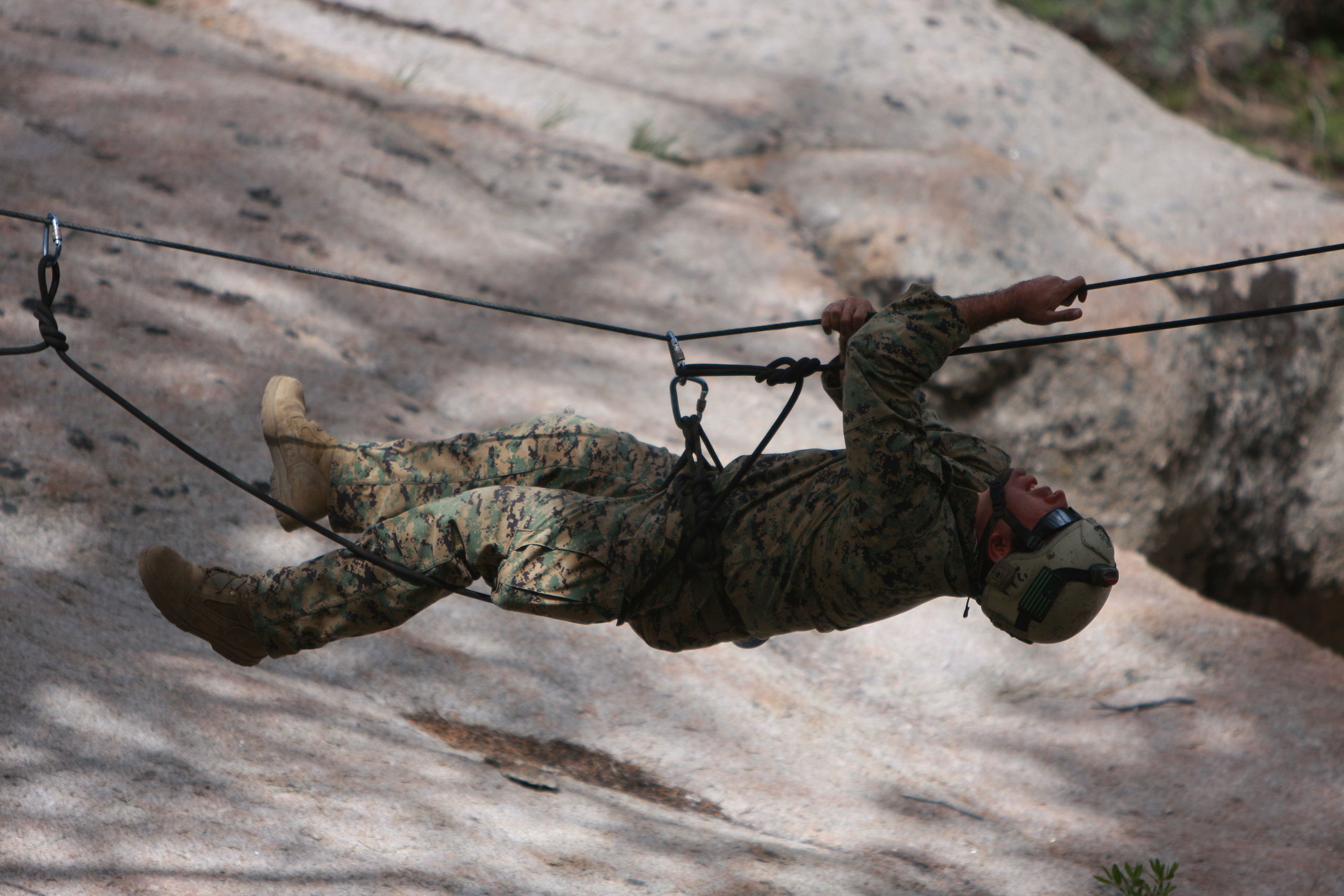Tyrolean traverses and how to use them safely
In areas that need to be crossed over but are ordinarily impassable or exposed to danger, you may find that a Tyrolean Traverse has been put in place to enable you to continue.
A Tyrolean Traverse is a fixed aid in the form of a line, which has been securely installed over the dangerous terrain. Examples where you would find one include features such as gushing water or a deep gorge.
However, in order to make use of it you will need to have the correct gear. Relying only on your own body strength to haul yourself across may be risky and you’re likely to come unstuck, so it’s not recommended that you use one of these lines without adequate gear.
Where there are swift waters running on popular trails, a fixed Tyrolean traverse will have been rigged up for hikers to use. Other times, however, climbers will need to rig up their own lines.
Sometimes when rock climbing this type of rig is needed in order to easily return to the main face of the climbing route. Where a fixed horizontal line is hung between two points, you will need to follow these steps to ensure a safe crossing.

The line, if fixed in place, will probably be a thick metal rope, it will be fixed securely on either side of the open space. You need to have the correct gear for traversing and to keep you secured to the line in case you slip.
If you have ever tried to hold onto a rope you know that it’s hard work, especially if it’s taught metal, hence the need for gear.
It is best to use a climbing harness. If you do not have one of these, you will need to construct one using webbing and slings. If you do this carefully, you can make an effective and safe harness.
With the harness on you can use several pieces of gear to help you and protect you during your crossing. You can clip the one end of a quickdraw through the belay loop and join the other end to the line in order to hold your weight.
Ensure that you have a backup with a second slightly longer sling attached to the harness with a locking carabiner on the zip line.
You could opt to have two girth hitched slings on your harness using a carabiner at each end. Attach both to the line. There needs to be a short distance between the harness and the gear holding it to the line. Probably about six inches will do. If the distance is too big, then you will need to use your arms to keep you close to the line.
It is important to always have a backup just in case of failure of the first gear on the line.
If you have a backpack with you, take it off and attach it to your harness and to the line so that it will slide along behind you.
Cross with your head pointing to the destination, do not cross feet first.
When using a quickdraw with locking carabiner, you should first clip your backpack to the line before you clip on the quickdraw which will hold your weight.
Get close to the line, using one hand, clip the quickdraw to the line and pull your body up to it, then hook both of your feet to the line to keep your body hanging, extending from the line.

Ensure that your weight is mostly supported by the harness.
Shove off using your feet so that your body on the harness slides along the line, you will need to then pull yourself along the line using your hands. Wear gloves if you have them and be careful of frayed bits on the metal rope.
When you have built up some momentum having pulled your body along the line you will be able to glide fairly easily across the rope. Keep your feet away from the rope.
Pull your body towards your hands and repeat, resting your body as you re-set your hands.

When you get to the other side, only unhook yourself when you can firmly place both of your feet on the ground. Then release the tension on the harness and carefully unclip yourself and your gear from the line.
Do not unclip until you are certain that you are completely still and secure.
If you have any comments then please drop us a message on our Outdoor Revival Facebook page
If you have a good story to tell or blog let us know about it on our FB page, we’re also happy for article or review submissions, we’d love to hear from you.
We live in a beautiful world, get out there and enjoy it.
Outdoor Revival – Reconnecting us all with the Outdoor





